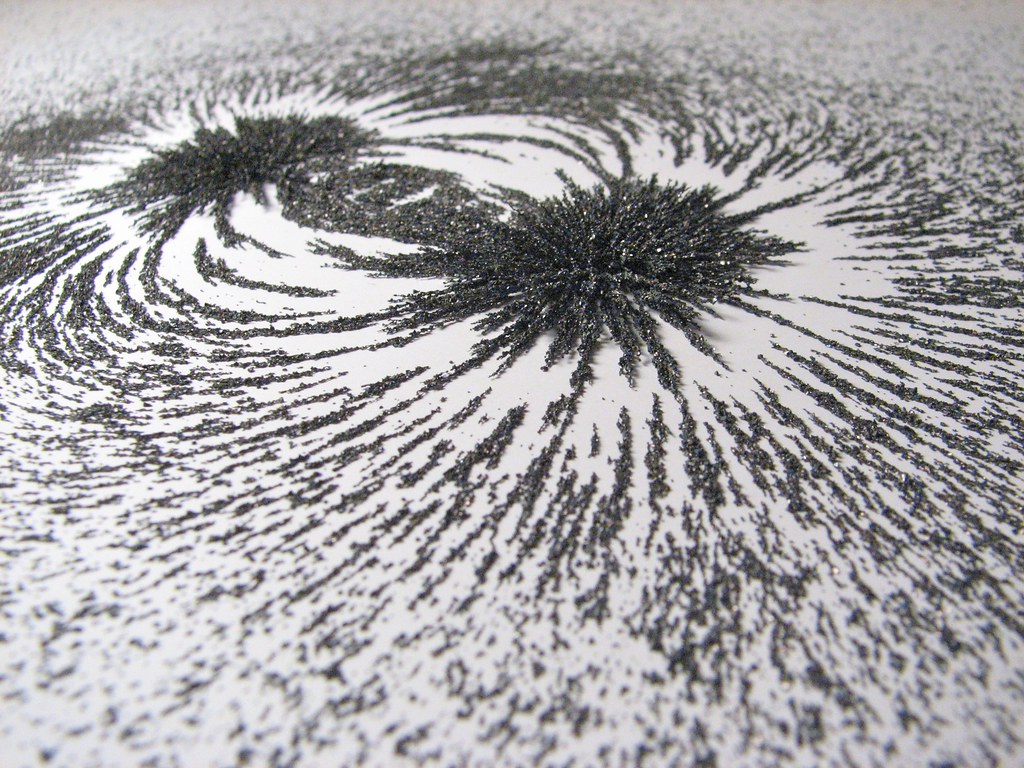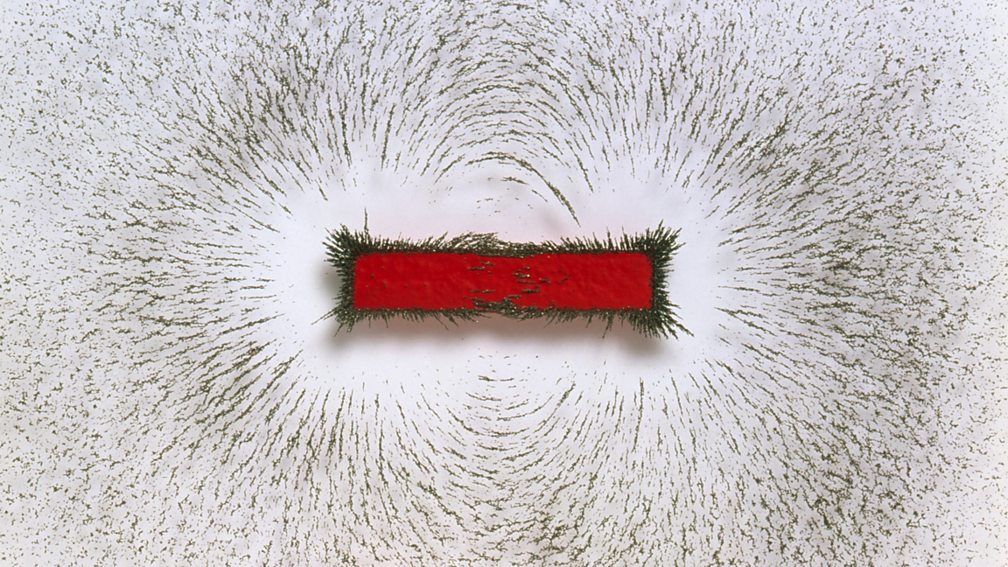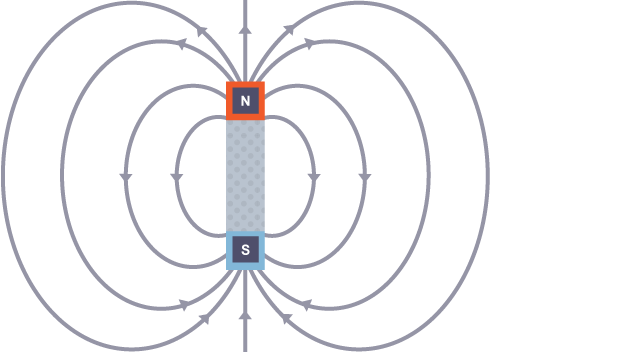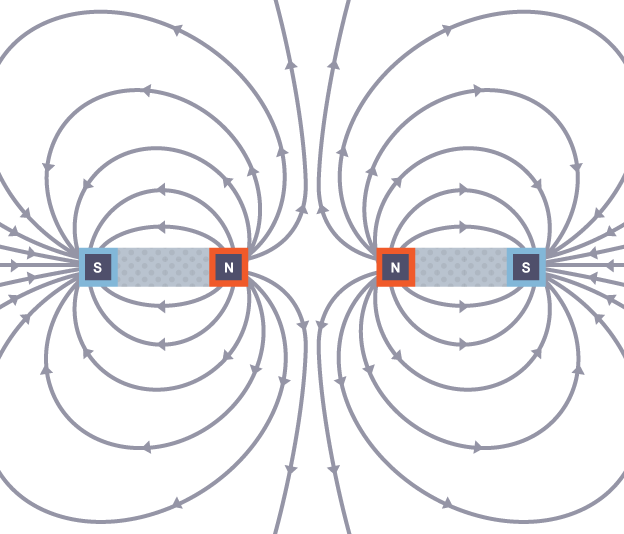
Magnetism on a Table
A magnet has two poles: a north and a south pole. Like poles repel each other, whereas opposite poles attract each other. Magnetic fields are used by electromagnets, motors, bells, and compasses.
Components:
- iron filings
- magnet
- paper
Working Principle:
A magnetic field is created by a magnet. A magnetic field is invisible, yet its effects can be observed. When a magnetic material is placed in a magnetic field, it is subjected to a force. Because the magnet and the material do not have to touch, the force is a non-contact force.
Visualising magnetic fields
A plotting compass or iron filings can be used to detect a magnetic field:

The magnetic field around this bar magnet is depicted by iron filings.
Magnetic field diagrams
Because drawing the results of an experiment like the one seen in the photo would be challenging, we instead draw simple magnetic field lines.
Take note of the following in the diagram:

- There is an arrowhead on each field line.
- The field lines are drawn from the north pole to the south pole.
- At the poles, the field lines are more dense.
- At the poles, where the field lines are most concentrated, the magnetic field is strongest.
Field lines also demonstrate what happens to two magnets’ magnetic fields when they attract or repel one other.

When two magnets attract each other, field lines run from one to the other. When two magnets repel each other, field lines do not lead from one to the other.
Instructions:
- Cover a magnet with a sheet of paper or transparent surface (this stops the iron filings sticking to the magnet)
- Strew iron particles across the surface
- Tap the surface lightly to spread the filings out.
- Watch and keep track of the outcomes
Links:
How to visualize magnetic field lines [Ask Fausto #2]
Magnetic fields – Electromagnetism and magnetism – KS3 Physics Revision – BBC Bitesize